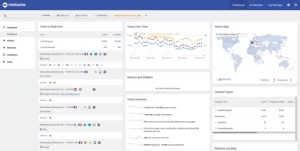Many businesses invest heavily in content, creating articles, blog posts, and landing pages they hope will attract customers from search engines like Google or Bing. Yet, a common problem undermines these efforts: a reliance on incomplete or fuzzy data. Many web analytics platforms use a method called data sampling. This means that to save processing power, they only look at a small piece of your visitor data and then guess what the rest looks like.
When you make critical business decisions based on a guess, you risk wasting time, money, and effort. Your content strategy can fail not because the writing is poor, but because the data guiding it is a mere estimate rather than a factual account. This is a significant risk for any serious digital strategy.
The solution is to switch to a platform built on a foundation of data integrity. Leveraging the privacy-focused, unsampled data from a robust analytics tool gives you a precise and complete picture of your website’s performance. This is where a proper Matomo SEO strategy becomes a powerful advantage. By using Matomo, you are not working with estimates; you are working with 100% of your data.
This post provides a step-by-step technical structure for a superior Matomo SEO approach. We will show you how to analyze Matomo reports to find hidden optimization opportunities, improve your on-page content with confidence, and measurably increase your organic search performance. Moving beyond guesswork and into data-driven precision is the key to a successful content strategy.
Foundational Setup: Configuring Matomo for SEO Data Integrity

Before you can analyze data, you must first ensure you are collecting the right data accurately. A successful Matomo SEO program begins with a proper setup. This step is crucial because the quality of your insights is directly tied to the quality of your data collection. If you have inaccurate data going in, you will have inaccurate data coming out. Taking the time to configure Matomo correctly ensures that every decision you make later is based on a complete and reliable picture of your website’s performance. It is the solid ground upon which your entire optimization strategy will be built.
Integrating Search Console Data
Your Matomo instance on its own can tell you a lot about what users do on your website, but it cannot see what happens before they click. It does not know what search terms they used on Google, how many times your site appeared in search results (impressions), or your average ranking. To get this crucial pre-click data, you must connect Matomo to Google Search Console and Bing Webmaster Tools. This integration is the most important step for an effective Matomo SEO analysis.
The process involves using a premium plugin within the Matomo Marketplace called Search Engine Keywords Performance. Once installed, you will navigate to the plugin’s settings page. Here, you will find instructions to authorize Matomo to access your Google Search Console account. You will be guided through a standard Google authentication process, where you grant permission for Matomo to view your data.
After connecting, Matomo will begin importing your search performance data: clicks, impressions, click-through rate (CTR), and average position. This information will then appear in a new “Search Performance” section in your Matomo dashboard. This step closes the loop, allowing your Matomo SEO efforts to be informed by what is happening both on the search engine and on your website. Repeating this simple process for Bing Webmaster Tools provides an even more complete view of your search visibility.
Verifying Goal and Conversion Tracking
Getting more traffic from search engines is a great start, but it is not the ultimate objective. The real goal is to get more business. This could mean more contact form submissions, more newsletter sign-ups, or more product sales. To measure the true success of your Matomo SEO work, you must track these important actions, which are called “conversions.”
In Matomo, you track these actions by setting up “Goals.” Setting up a Goal is straightforward. You navigate to the “Goals” section in your Matomo administration panel and define what a conversion looks like for your website. For example, if a user filling out a contact form is redirected to a “thank you” page, you can create a Goal that triggers every time a visitor lands on that specific page URL. You can also track clicks on certain links or downloads of a file.
Verifying that these Goals are working correctly is not just a suggestion; it is a necessity. Proper Goal tracking allows you to directly attribute business outcomes to your SEO efforts. You can see which landing pages and which search keywords are not just bringing in traffic, but are bringing in visitors who convert into leads or customers. This ability to connect your Matomo SEO strategy to real revenue is what turns SEO from a cost center into a profit driver for your business.
Decoding Matomo’s SEO Reports: A Technical Overview

Once your setup is complete and data is flowing in, the next step is to understand where to look and what you are looking at. Matomo offers several key reports that are treasure troves of information for your SEO strategy. Understanding these reports is essential for anyone serious about Matomo SEO. Each report gives you a different piece of the puzzle. By learning to read them together, you can build a full picture of your organic search performance, from the search engine results page all the way through to a conversion on your site. This section breaks down the must-know reports for a powerful Matomo SEO workflow.
The “Search Engines & Keywords” Report
Historically, this report was the go-to place for seeing which keywords people used to find your website. However, due to privacy changes across search engines, most of this data now appears as “(keyword not defined).” This makes the report less useful on its own for understanding specific user queries from engines like Google.
However, it is not useless. It still provides valuable information on which search engines are sending you traffic (Google, Bing, DuckDuckGo, etc.). This can help you understand your audience and where to focus your efforts. For example, if you see a surprising amount of traffic from a privacy-focused search engine like DuckDuckGo, it might signal that your audience is concerned about privacy, which could influence your content and marketing messages. While you will not get detailed keyword lists here, this report is the first stop in understanding the sources of your organic traffic, a key starting point for any Matomo SEO audit.
The “Search Performance” Report (from GSC Integration)
This report is the heart of your Matomo SEO analysis. It is populated by the data you imported from Google Search Console and is where you will spend most of your time identifying opportunities. It breaks down your performance into four key metrics:
- Impressions: This is the number of times your website appeared in Google’s search results for a particular query. High impressions mean high visibility. It is the baseline metric; without impressions, you cannot get clicks.
- Clicks: This is the number of times a user actually clicked on your link from the search results. This is your initial performance indicator, showing that your result was compelling enough to earn a click.
- CTR (Click-Through Rate): This is the percentage of impressions that resulted in a click (Clicks ÷ Impressions). CTR is a crucial efficiency metric. It tells you how well your search result snippet, composed of your title tag and meta description, is performing. A low CTR suggests your snippet is not enticing enough to users, even if you are ranking well. Improving CTR is a core task in Matomo SEO.
- Average Position: This shows your average ranking in the search results for a given keyword. While it is an important indicator, it should be analyzed alongside the other metrics. A high rank with a low CTR, for example, signals a major opportunity for improvement.
The “Entry Pages” Report
While the Search Performance report tells you what happens on Google, the Entry Pages report tells you what happens the moment a user lands on your site. This report, found under the “Behavior” section, shows you which of your pages are the most common landing pages for all visitors, including those from organic search.
For your Matomo SEO work, you can filter this report to show only visitors from search engines. This will give you a clear list of your top organic landing pages. Alongside each page, you will see key user engagement metrics like bounce rate (the percentage of visitors who leave after viewing only one page), average time on page, and conversion rates for your configured Goals.
This report is vital for assessing content effectiveness. A page might get a lot of clicks from Google, but if it has a 90% bounce rate and a 0% conversion rate, the content is clearly failing to meet user expectations. This report connects the click from Google to the actual user experience, a critical link in the Matomo SEO chain.
The 5-Step Process for Content Optimization Using Matomo Data
Knowing how to read reports is one thing; knowing what to do with the information is what drives results. This section provides a clear, repeatable 5-step workflow for turning your Matomo SEO data into actionable content improvements. This is the core, practical component of the article. Following this process will allow you to systematically identify weaknesses, implement targeted optimizations, and create content that performs better for both users and search engines. This framework transforms Matomo SEO from a passive reporting activity into an active engine for growth.
Step 1: Identify “Opportunity” Pages
The first step is to find the low-hanging fruit. These are your “opportunity” pages: pages that Google already sees as relevant and shows to a lot of people, but that are not convincing enough users to click. In other words, they have high impressions but a low Click-Through Rate (CTR).
To find these pages, navigate to your “Search Performance” report in Matomo. Sort the table by “Impressions” in descending order, so your most visible pages are at the top. Now, scan down the “CTR” column. Look for pages that have thousands of impressions but a CTR of less than 2-3%. For example, you might see a page with 20,000 impressions but a CTR of only 0.8%.
This is a prime opportunity. Google is already giving you a chance by showing your page to a massive audience. Your job is to improve your “advertisement” on the search results page, which is your title tag and meta description, to capture more of that potential traffic. Focusing on these pages first is the most efficient use of your Matomo SEO time, as a small improvement in CTR can lead to a large increase in traffic.
Step 2: Analyze Keyword-to-Page Mapping
Once you have identified an opportunity page, you need to understand why Google is showing it to so many people. What specific search terms, or keywords, is it ranking for? To do this, click on the opportunity page within the Search Performance report. Matomo will then filter the report to show you only the keywords that are generating impressions and clicks for that specific page.
Here, you are looking for a potential mismatch. You might find that the page is getting a lot of impressions for a keyword that is only mentioned once or twice in your content. This is a keyword gap. Google thinks your page is somewhat relevant, but your content does not fully address the searcher’s intent for that term.
For example, your page about “Standard Office Chairs” might be getting thousands of impressions for the term “ergonomic office chairs for back pain.” This tells you that you have a massive opportunity to expand your content to specifically address that topic. This analysis is a critical intelligence-gathering step in your Matomo SEO strategy, as it reveals exactly what your audience is looking for and how you can better meet their needs.
Step 3: Execute On-Page SEO Enhancements
Now that you have your page and the keywords it should be targeting, it is time to make improvements. This is where you execute on the insights you have gathered. Your goal is to make your page and its search snippet more relevant and compelling.
- Title & Meta Optimization: Your title tag is the single most important on-page SEO element. Rewrite the title of your opportunity page to include the most important, high-impression keyword you found in Step 2. Do the same for your meta description. Make it compelling. Instead of a boring description, ask a question or highlight a key benefit. For example, instead of “Article about ergonomic chairs,” try “Tired of back pain? Discover the 5 features every ergonomic office chair must have.” This directly targets the user’s need.
- Semantic Content Enrichment: Go into the body of your article and naturally weave in the keywords you discovered. Do not just stuff them in. Expand your content to actually answer the questions related to those terms. If you found the keyword “ergonomic office chairs for back pain,” add a new section to your article titled “How Ergonomic Chairs Can Alleviate Back Pain,” and explain the science behind lumbar support and adjustability. This deepens your content’s topical authority. A good Matomo SEO practice is to also search for your target keyword on Google and look at the “People Also Ask” box. Answering these questions directly in your content is a powerful way to improve relevance.
- Header Tag & Structure Audit: Make sure your article is easy to read and skim. Use clear header tags (H1, H2, H3) to structure your content. Your main title should be the H1. Your main sections should be H2s, and subsections should be H3s. Include your primary and secondary keywords in these headers where it feels natural to do so. This helps both users and search engines quickly understand the structure and topic of your page. A well-structured article is fundamental to good on-page Matomo SEO.
Step 4: Improve User Engagement Metrics
Bringing a user to your page is only half the battle. You need to convince them to stay, read, and engage with your content. Search engines like Google pay close attention to user engagement signals. If users consistently click on your page and then immediately click the “back” button (a bounce), it tells Google your page is not a good answer to their query, and your rankings may suffer.
Use Matomo’s “Entry Pages” report to check the user engagement metrics for the page you are optimizing. Look at the Bounce Rate and the Average Time on Page. If the bounce rate is high (e.g., over 80%) and the time on page is low (e.g., under 30 seconds), you have a content quality or user experience problem. To fix this, consider:
- Adding internal links: Link to other relevant articles on your site. This keeps users engaged and helps them discover more of your content.
- Embedding media: Add relevant images, infographics, or videos. This breaks up long blocks of text and can dramatically increase the time users spend on your page.
- Improving readability: Use short sentences and paragraphs. Use bullet points and bold text to highlight key information. Make your content easy to scan and digest. Improving these metrics is a crucial part of a holistic Matomo SEO approach.
Step 5: Monitor and Iterate with Annotations
Optimization is not a one-time task; it is a continuous cycle of improvement. After you have made your changes, you need to track whether they had a positive impact. This is where Matomo’s “Annotations” feature becomes incredibly useful.
An annotation is like a small note you place on your data timeline. Go to the date you published your content changes and create an annotation that says something like, “Updated title tag and added section on back pain for Ergonomic Chairs page.”
Now, wait a few weeks for Google to recrawl your page and for new data to accumulate. Then, you can use Matomo’s “Compare” feature. You can compare the performance of the 30 days before your annotation to the 30 days after your annotation. This will show you in clear numbers if your changes led to a higher CTR, better rankings, and more traffic. This final step is what makes Matomo SEO a true data-driven discipline. It allows you to prove your results, learn from what works, and continuously refine your strategy over time.
Advanced Analysis: Segments and SEO-Driven CRO

Once you have mastered the fundamental 5-step process, you can move on to more advanced techniques to get even more value from your Matomo SEO data. These strategies involve slicing your data in more granular ways to uncover deeper insights and connecting your SEO traffic directly to business goals. This is how you elevate your Matomo SEO work from simple traffic generation to a core driver of business growth and conversion rate optimization (CRO).
Using Custom Segments for Granular Insights
By default, Matomo reports show you data from all of your visitors combined. A “segment” is a powerful feature that allows you to filter your reports to look at only a specific subset of your visitors. It is like putting on a special pair of glasses that only lets you see the people you are interested in. For Matomo SEO, creating custom segments is a game-changer.
For example, you can create a segment for “Brand vs. Non-Brand” organic traffic. A “brand” search is when someone types your company name into Google (e.g., “Silphium Design”). A “non-brand” search is for a product or service you offer (e.g., “best biophilic web design”). By creating a segment that filters for visitors who came from search but did not use your brand name as a keyword, you can analyze the performance of your pure content marketing efforts.
You can also create segments based on geography. If you are an international business, you can create a segment for each target country (e.g., United Kingdom, Canada). This allows you to see which content resonates best in different regions and tailor your Matomo SEO strategy accordingly. Segments let you move beyond generic analysis and start asking very specific, high-value questions about your audience.
Connecting SEO to Conversion Rate Optimization (CRO)
As mentioned earlier, the ultimate goal of SEO is not just traffic, but conversions. Conversion Rate Optimization (CRO) is the practice of improving your website to increase the percentage of visitors who complete a desired action. A strong Matomo SEO program is directly linked to CRO.
With your Goals already set up, you can start analyzing the conversion rates of your top organic landing pages. Look at the Entry Pages report (filtered for search engine traffic) and sort by conversions or conversion rate. You might discover that one of your blog posts, while not having the highest traffic, has an incredibly high conversion rate. This is a golden insight. It means the content on that page is perfectly aligned with the needs of a motivated buyer. You can then work to get more traffic to that specific page, knowing it is a proven performer.
Furthermore, you can use Matomo’s Funnels and User Flow reports. A funnel lets you define a series of steps a user should take to convert (e.g., View Product -> Add to Cart -> Checkout -> Thank You Page). You can then apply your organic traffic segment to this report to see exactly where search visitors are dropping off in the conversion process. This allows you to pinpoint specific pages that need improvement to increase your overall SEO return on investment, making your Matomo SEO efforts directly accountable to the bottom line.
Conclusion: Shifting to a Proactive, Data-Centric SEO Culture
In today’s competitive digital landscape, operating on guesswork is no longer a viable option. The key to sustainable growth lies in building a strategy on a foundation of complete, accurate, and actionable data. The framework outlined in this article provides a clear path to move beyond passive reporting and into the realm of active, data-driven optimization. By embracing a robust Matomo SEO culture, you are choosing precision over estimation and clarity over confusion.
To recap, the path to a more effective content strategy involves:
- Building a Solid Foundation: Properly configuring Matomo and integrating it with search engine tools to ensure data integrity.
- Understanding Your Data: Learning to decode the key reports that reveal your true search performance.
- Executing a Repeatable Process: Following the 5-step cycle of identifying opportunities, analyzing keywords, enhancing content, improving engagement, and monitoring results.
- Advancing Your Analysis: Using powerful features like segments and conversion tracking to connect your Matomo SEO efforts directly to business outcomes.
The primary advantage of Matomo in this process cannot be overstated. Its commitment to 100% data ownership and unsampled accuracy provides a significant competitive edge. When your competitors are making decisions based on statistical guesses, you are operating with the full, unadulterated story of how users find and interact with your website. It is time to stop just looking at your analytics and start using them. Begin implementing this proactive, data-centric Matomo SEO framework today and turn your content into a predictable engine for organic growth.






